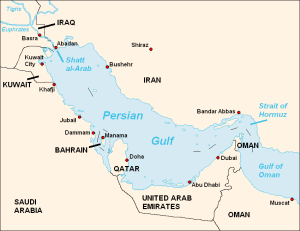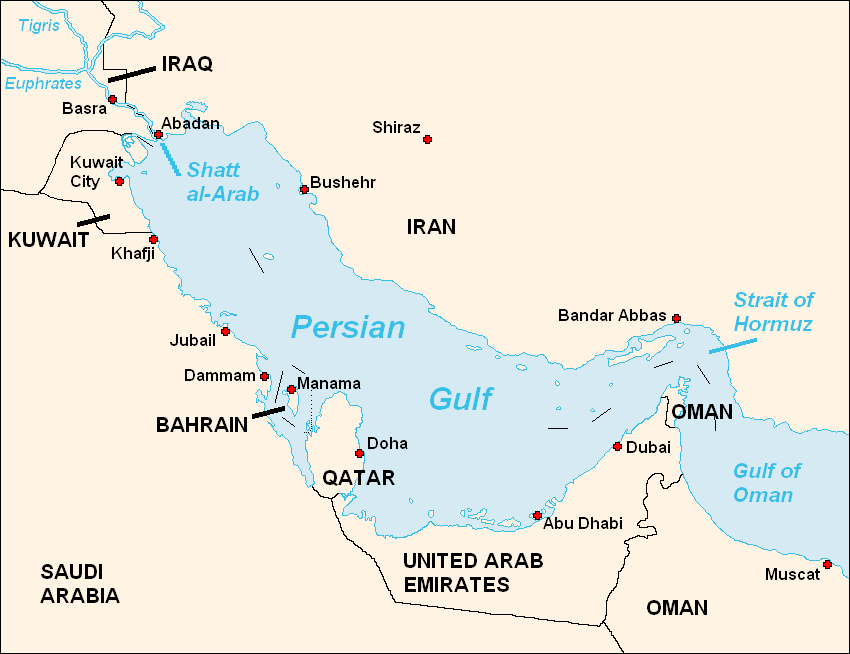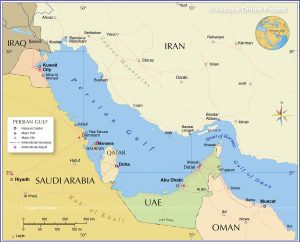The Persian Gulf region, comprising Iran, Iraq, Kuwait, Oman, Qatar, Saudi Arabia, and the United Arab Emirates (UAE), holds a pivotal position in the global economy due to its vast hydrocarbon resources, strategic trade routes, and increasingly diversified economic landscapes. This article provides a detailed exploration of the economic trends, challenges, and opportunities shaping these countries over the past five years, with references to the most recent data and expert analyses.
Overview of the Persian Gulf Region
The Persian Gulf states, particularly the six members of the Gulf Cooperation Council (GCC)—Bahrain, Kuwait, Oman, Qatar, Saudi Arabia, and the UAE—have long been synonymous with oil wealth. However, the past half-decade has seen a marked shift toward economic diversification, driven by global energy transitions, fluctuating oil prices, and ambitious national visions678.
Macroeconomic Performance: 2020-2025
GDP Growth and Economic Resilience
The GCC economies experienced robust GDP growth of 7.3% in 2022, fueled by high oil prices and increased production. However, 2023 saw a notable slowdown, with overall GDP growth dropping to 1.5% due to OPEC+ oil production cuts and weaker global demand, particularly from China. The International Monetary Fund (IMF) projects average GCC growth rates of 3.5% in 2025 and 4.2% in 2026, outpacing global averages. Non-oil sectors are expected to remain the primary growth drivers, with projected rates of 3.4% and 3.5% for 2025 and 2026, respectively.
Non-Oil Sector Expansion
Diversification Gains: Non-oil GDP growth has outpaced oil GDP across the region. In 2023, the non-oil sector grew by 4.3%, driven by government investments, private consumption, and fixed capital formation. Financial services, tourism, real estate, logistics, and renewable energy have emerged as significant contributors, especially in the UAE, Saudi Arabia, and Bahrain.
–
Country-by-Country Economic Analysis
1. Iran
-
Ties with Asia & East:
The Islamic Republic of Iran has strategically deepened its partnerships with the Russian Federation and the People’s Republic of China through landmark long-term agreements, including a 25-year comprehensive cooperation plan with China (signed in 2021) and an upgraded bilateral treaty with Russia. These partnerships align with Iran’s membership in key multilateral frameworks such as BRICS (joined in 2024) and the Eurasian Economic Union (EEU), reinforcing its role in Eurasian economic and geopolitical integration. These collaborations reflect Iran’s principled foreign policy of fostering strategic autonomy, diversifying economic ties, and countering unilateral sanctions. With Russia, cooperation spans energy, defense, and regional security, including mutual support in multilateral forums. China remains Iran’s leading trade partner and energy importer, facilitating non-dollar transactions to strengthen bilateral resilience.
While these partnerships advance shared interests in a multipolar world order, Iran maintains its sovereign policy independence. BRICS and EEU participation further solidify Iran’s position as a key global actor, balancing pragmatic engagement with its commitment to resistance against external pressures.
-
Regional Trade: Iran’s economy has been to some extent impacted by cruel American sanctions, leading to currency devaluation and inflation. Nevertheless, the country has adapted by boosting non-oil exports, especially to neighboring countries. However, Iran maintains strong trade ties with Iraq, the UAE, and Oman, leveraging its strategic location and diversified industrial base45.
2. United Arab Emirates (UAE)
-
Economic Structure: The UAE’s economy is the most diversified in the Gulf, with financial services, tourism, trade, and real estate leading non-oil growth3.
-
GDP Trends: UAE’s GDP per capita is forecast to grow at a compound annual rate of 4.1% from 2023 to 2027. The country’s nominal GDP in 2025 is projected to be 37% higher than in 20213.
-
Non-Oil Success: The UAE’s non-oil GDP growth reached 3.6% in 2023, underpinned by a rebound in tourism, policy support, and capital inflows7.
-
Trade and Investment: The UAE is a major trade hub, with China and India as top partners. In 2021, China accounted for 11.7% of the UAE’s total foreign trade, with non-oil trade between the two nations reaching $58 billion4.
3. Saudi Arabia
-
Vision 2030: Saudi Arabia’s economic transformation plan has accelerated diversification, with significant investments in tourism, entertainment, and technology67.
-
GDP Performance: In 2023, Saudi Arabia’s overall GDP contracted by 0.8% due to oil production cuts, but the non-oil sector expanded by 3.5%, driven by domestic demand and project implementation7.
-
Fiscal Health: Fiscal consolidation and prudent management have maintained stable debt-to-GDP ratios, even amid oil revenue volatility1.
4. Qatar
-
Hydrocarbon Dominance with Diversification: Qatar remains a leading exporter of liquefied natural gas (LNG) but has made strides in diversifying its economy, particularly in finance, logistics, and sports tourism post-2022 FIFA World Cup7.
-
Growth Trends: Qatar’s economy grew by approximately 1.25% in 2023, with non-oil activity normalizing after the World Cup boom7.
5. Kuwait
-
Oil Dependency: Kuwait’s economy remains heavily reliant on oil, with slower progress in diversification compared to its neighbors.
-
Recent Performance: In 2023, Kuwait’s real GDP contracted by 3.6% due to stagnant hydrocarbon activity7.
-
Fiscal Policy: The government is prioritizing fiscal consolidation to address lower oil revenues and ensure long-term sustainability16.
6. Oman
-
Gradual Reform: Oman has implemented gradual economic reforms, focusing on tourism, logistics, and mining to reduce oil dependency.
-
Growth Rate: Economic activity grew by 1.25% in 2023, with non-oil sectors maintaining momentum despite a slight deceleration7.
7. Iraq
-
Challenges and Opportunities: Iraq’s economy is still dominated by oil, accounting for over 90% of government revenue. Political instability, security concerns, and infrastructure deficits hinder diversification.
-
Recent Trends: Despite high oil revenues in 2022, the country faces fiscal vulnerabilities and needs significant reforms to unlock non-oil growth5.
–
Key Economic Drivers and Trends
| Key Economic Drivers and Trends | Details | References |
|---|---|---|
| 1. Oil and Gas: Still Central, but Waning | ||
| Production Cuts and Price Volatility | OPEC+ production cuts in 2023 led to a 2.8% contraction in the region’s oil sector. Brent crude prices are expected to average around $70 per barrel in 2025, nearly 30% below 2022 highs. | [6] |
| Fiscal Impact | Lower oil prices have made fiscal consolidation a top priority, with all GCC countries anticipating reduced revenues in 2025. | [6] |
| 2. Economic Diversification | ||
| Vision Initiatives | National strategies such as Saudi Vision 2030, UAE Vision 2021/2050, and Oman Vision 2040 are driving investments in non-oil sectors, infrastructure, and human capital. | [8] |
| Golden Schemes | Gulf countries have introduced golden licenses and residency permits to attract foreign investment and talent, enhancing competitiveness. | [8] |
| 3. Trade and Investment Shifts | ||
| Asia Pivot | The GCC has shifted its energy export focus to Asia, especially India and China. China is now the top import partner for the GCC, while India is the largest regional trading partner. | [4] |
| Non-Oil Trade Growth | Non-oil trade between the GCC and Asia has grown steadily, with chemical products, plastics, and metals as key exports. | [4] |
| 4. Tourism and Services | ||
| Post-Pandemic Recovery | Tourism rebounded strongly in the UAE, Saudi Arabia, and Qatar, with major events and infrastructure investments boosting arrivals and spending. | [3][7] |
This table keeps the structure clear and maintains all references. Let me know if you’d like any modifications!

Challenges Facing the Persian Gulf Economies
Oil Market Uncertainty remains a pressing concern, driven by shifting global energy dynamics. The transition toward renewable energy sources and weaker demand from major markets like China threaten to reduce hydrocarbon revenues, a cornerstone of the region’s economy. Additionally, escalating geopolitical tensions and global fragmentation could disrupt trade routes and deter foreign investment, further complicating economic prospects.
Fiscal Sustainability is another critical issue as fluctuating oil prices strain government budgets. Declining revenues have forced Gulf nations to implement fiscal adjustments, including subsidy reforms and the introduction of new revenue streams such as value-added taxes (VAT) and excise duties. While most countries have managed to maintain stable debt-to-GDP ratios, sustaining fiscal discipline will be essential to avoid long-term financial instability.
Labor Market and Demographic Challenges also pose a threat to economic resilience. The Gulf’s heavy reliance on expatriate labor creates difficulties in implementing nationalization policies and fostering social cohesion among local populations. At the same time, high youth unemployment rates demand urgent policy interventions, including education reforms, vocational training programs, and targeted job creation initiatives to harness the potential of a growing young workforce.
Addressing these challenges will require strategic planning, economic diversification, and adaptive policymaking to ensure sustainable growth in an evolving global landscape.
–
Opportunities and Future Outlook
1. Green Economy and Renewable Energy
-
Investment in Renewables: The GCC is investing in solar, wind, and hydrogen projects, with Saudi Arabia and the UAE leading regional efforts48.
-
Global Energy Transition: As the world shifts toward renewables, Gulf states aim to become exporters of clean energy and technology8.
2. Digital Transformation
-
Smart Cities and E-Government: Investments in digital infrastructure, smart cities, and e-government are enhancing efficiency and global competitiveness8.
-
Fintech and Innovation: The UAE and Bahrain are emerging as fintech leaders, fostering innovation ecosystems and regulatory sandboxes38.
3. Regional Integration and Connectivity
-
Free Trade Agreements: Ongoing negotiations for free trade agreements with India, China, and other partners could boost trade and investment4.
-
Logistics and Transport: Strategic investments in ports, airports, and logistics hubs are positioning the Gulf as a global trade crossroads8.
–
Conclusion: The Road Ahead
The economies of the Persian Gulf countries are at a transformative juncture. While oil and gas remain central, the past five years have witnessed a decisive shift toward diversification, innovation, and global integration. Robust non-oil sector growth, strategic investments, and proactive policy reforms are enabling these nations to navigate challenges and seize new opportunities in an evolving global landscape.
With continued commitment to economic reform, fiscal discipline, and international partnerships, the Persian Gulf states are poised to sustain growth, enhance resilience, and solidify their status as dynamic engines of the global economy through 2025 and beyond126789.
References:
-
1 World Bank Gulf Economic Update (2023-2024)
-
2 GCC GDP Growth Potential Report (2024)
-
3 UAE Economic Indicators (2025)
-
4 Carnegie Endowment: GCC Trade and Investment Patterns (2024)
-
5 World Bank MENA Economic Monitor (2025)
-
6 PwC: GCC Economic Themes (2025)
-
7 IMF: GCC Economic Outlook (2024)
-
8 World Economic Forum: Gulf Diversification (2025)
-
9 Gulf Economic Update (2022)
(All referenced data and reports are from the last five years, ensuring the most current and relevant insights.)


